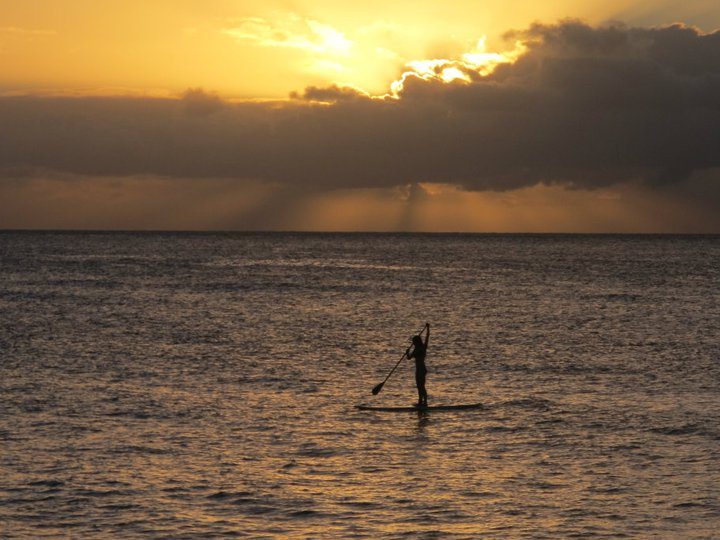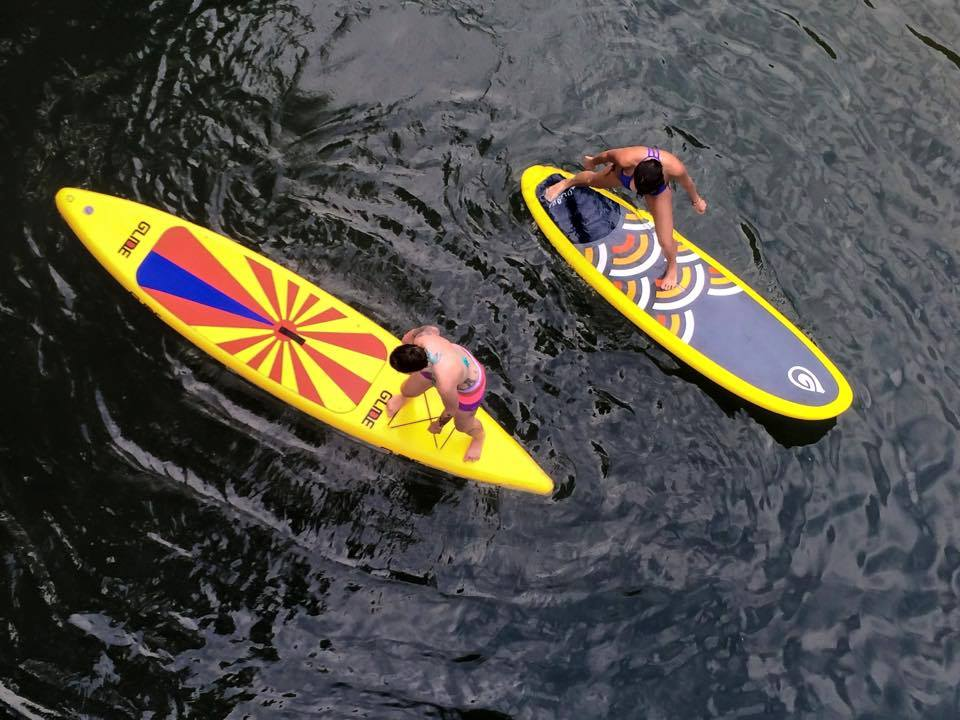
The Balance Between Speed and Stability When Purchasing a Paddle Board
Discover how to balance paddle board speed and stability to match your paddling style. Learn how hull shape, board width, and Glide’s AeroMatrix™ construction influence performance, helping you pick the perfect SUP for calm lakes, touring, or surf.
Learn how to balance speed and stability when buying a paddle board. Discover how width, shape, and Glide’s AeroMatrix™ tech help you find the perfect board for your paddling style.
Table of contents
Finding the perfect paddle board is all about balance — literally and figuratively. Every paddler, whether brand-new or seasoned, eventually discovers the ongoing trade-off between speed and stability. Too much focus on one, and you lose some of the other.
Understanding this balance helps you choose a board that fits your skill level, favorite paddling style, and goals on the water. Let’s break down what each factor means, how they interact, and how to pick the sweet spot that matches you.

Understanding the Importance of Paddle Board Speed and Stability
Stability: The Foundation of Every Ride
For beginners, stability is everything. It’s what allows you to stand up confidently and focus on paddling instead of balance. Stability depends on three main factors:
-
Width: Wider boards (around 32–34 inches) create a larger platform, making it easier to find your balance.
-
Length: A longer board offers more surface area and smoother glide, which can enhance stability in flat water.
-
Hull Shape: Planing hulls — the flatter, rounder shapes found on most all-around boards — add forgiveness and steadiness.
Inflatable paddle boards, like those from Glide, naturally offer high stability. Their buoyant construction and wide deck pads make them ideal for new paddlers, families, SUP yoga, and anyone who values comfort and control.
Speed: The Thrill of Glide and Efficiency
Speed comes from efficiency — how easily your board cuts through the water. Paddlers seeking distance, touring, or a faster workout gravitate toward sleeker, narrower designs.
Boards made for speed typically feature:
-
Narrow Widths (28–31") for less drag.
-
Displacement Hulls with pointed noses that slice through the water.
-
Rigid Construction, which maintains shape and maximizes glide.
Solid boards are traditionally faster, but modern inflatable boards with AeroMatrix™ woven drop-stitch cores can now reach similar performance levels while maintaining stability. Glide’s Quest and Wander models are great examples — built for paddlers who crave speed without losing confidence underfoot.

How to Find Your Perfect Balance
When starting out, stability often matters more than speed. A board that feels steady builds confidence and keeps your learning curve fun rather than frustrating.
That’s why many first-time paddlers choose an all-around inflatable SUP such as the Glide O2 Retro. Its generous width and ThermoFuse™ triple-layer rails create a rigid, balanced ride that grows with you as your skills improve.
As paddlers advance, they naturally want a bit more speed. This might mean moving to a longer touring-style board or experimenting with a narrower shape. Glide’s Quest 12’6” or Wander series let you make that leap while keeping the forgiving feel of an inflatable design.
The key is to consider how you paddle most:
-
Leisure or yoga? Choose wider, stable boards.
-
Distance or touring? Look for longer, sleeker designs.
-
Rivers or surf? Go for versatile mid-width options that balance agility and control.
There’s no “right” board — only the right one for your goals.
Accessories That Influence Performance
Accessories play a surprisingly big role in your board’s handling.
-
Fins: The fin setup affects both speed and stability. A longer center fin improves tracking (speed and straight lines), while side fins boost maneuverability.
-
Adjustable Paddle: Using a properly sized paddle makes your stroke more efficient, helping you maintain pace without fatigue.
-
Kayak Seat Conversion: Glide’s inflatable packages include kayak-seat options that let you sit down for longer tours — trading a little speed for extra stability and comfort.
-
Leash and PFD: Safety gear is non-negotiable. Always wear a leash, and pair it with a Coast Guard–approved personal flotation device.
Matching Your Board to Water Conditions
Where you paddle also determines your ideal balance:
-
Flatwater (lakes, reservoirs, calm bays): Stability rules. A wider, planing-hull board is forgiving and enjoyable for long sessions or SUP yoga. Glide’s Retro or Lotus models shine here.
-
Open Water or Touring: Longer, narrower boards with displacement hulls glide efficiently and maintain speed over distance — like the Quest 12’6”.
-
Rivers and Light Surf: Medium-width boards offer agility while retaining enough stability to handle moving water.
Each body of water rewards a different design, which is why many paddlers eventually own more than one board.
The Glide Advantage
Glide’s inflatable SUPs combine speed and stability better than most thanks to two proprietary technologies:
-
AeroMatrix™ Cross-Woven Drop Stitch: Creates a stiffer, more rigid core that feels like a solid board when inflated to full PSI.
-
ThermoFuse™ Triple-Layer Rails: Fused, not glued, for exceptional durability, lighter weight, and a cleaner environmental footprint.
These innovations mean you don’t have to choose between portability and performance — you can have both.

Final Thoughts
The art of SUP lies in finding your rhythm between paddle board speed and stability. A stable board builds confidence; a faster one fuels progression. The best part? You don’t have to sacrifice one for the other when you choose a well-designed inflatable from Glide.
Each model — from the ultra-stable Lotus to the speedy Quest — embodies the balance that makes SUP accessible, adventurous, and endlessly rewarding. With the right board beneath your feet, every glide becomes effortless, and every session a reminder of why you fell in love with paddling in the first place.
FAQs: Speed vs. Stability in Paddle Boards
How wide should my paddle board be for good stability?
Most beginners are comfortable on boards between 32 and 34 inches wide. Narrower boards under 31 inches are faster but less forgiving for balance.
Do inflatable boards feel slower than solid boards?
High-end inflatables like Glide’s O2 Retro or Quest are surprisingly fast. Their woven cores and firm PSI give them excellent glide with only minimal difference from rigid boards.
Can I use one board for both stability and speed?
Yes — an all-around inflatable SUP (10’6”–11’6”) offers a great middle ground. Glide’s O2 Retro balances steady footing with enough length to move efficiently.
What board shape is fastest?
Boards with a displacement hull and pointed nose are built for speed. They track straighter and reduce drag, ideal for long-distance or fitness paddling.
Is a wider board always better for beginners?
Wider boards are easier to balance on, but extremely wide boards can feel sluggish. Look for something stable but responsive — around 33 inches is the sweet spot.
Does board construction affect both speed and stability?
Absolutely. Stiffer construction (like Glide’s AeroMatrix™) enhances both speed and stability because the board flexes less, maintaining shape and glide under pressure.
What if I mostly paddle with kids or pets?
Choose a stable platform like the Glide Lotus or Retro. Their generous deck space and durability make them ideal for carrying extra passengers safely.
Which paddle board type is best for racing or fitness paddling?
A longer touring or race-style board like the Glide Quest 12’6” gives you the speed, tracking, and efficiency needed for distance sessions or workouts.





